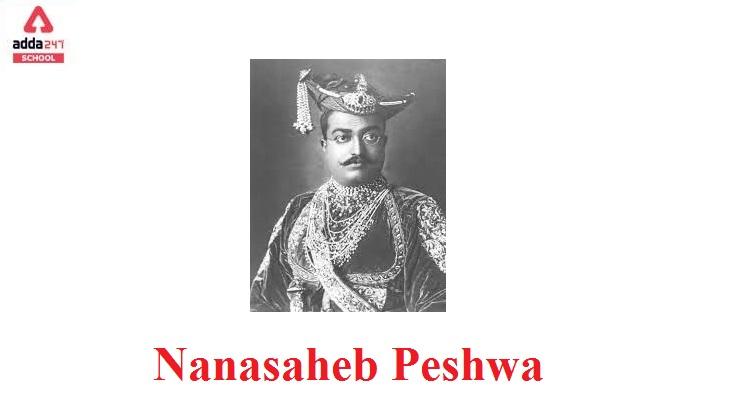Table of Contents
Nana Saheb Peshwa is one of the great personalities of India. Peshwa Shrimant Balajirao Bhat, generally acknowledged as Nana Saheb Peshwa was the Maratha Empire’s eighth Peshwa. Nana Saheb Peshwa was born on December 8, 1720, and then became Peshwa in 1740 after his legendary father, Peshwa Bajirao I, died.
Nana saheb Peshwa
Nana Saheb, also known as Nana Sahib or Dhondu Pant, was a prominent figure in Indian history, particularly during the Indian Rebellion of 1857, often referred to as the Sepoy Mutiny or the First War of Indian Independence. He played a significant role in the events of that time. Here are the key details about Nana Saheb Peshwa:
Early Life and Background: Nana Saheb was born in 1824 in Pune, Maharashtra, India, as the adopted son of Baji Rao II, the last Peshwa (Prime Minister) of the Maratha Confederacy. His birth name was Dhondu Pant.
Adoption and Succession Dispute: After the defeat of the Marathas in the Anglo-Maratha Wars, Baji Rao II was exiled by the British, and his territories were annexed. Nana Saheb’s adoption as the heir to the Peshwa was not officially recognized by the British East India Company, leading to a dispute over the pension and privileges due to the Peshwa.
Role in the Rebellion of 1857: The Indian Rebellion of 1857 began as a mutiny among Indian soldiers (sepoys) in the British East India Company’s army. Nana Saheb’s involvement in the rebellion stemmed from his grievances against the British and his desire to reclaim the rights and privileges denied to him.
Kanpur Massacre: Nana Saheb’s name became notorious after the infamous Kanpur Massacre of 1857. Following the siege of Kanpur by Indian rebels, British civilians and military personnel were promised safe passage by Nana Saheb if they surrendered. However, upon surrendering, they were attacked and killed, leading to a significant loss of life.
Later Years and Disappearance: After the British reasserted control and suppressed the rebellion, Nana Saheb’s fate remained unclear. He is believed to have escaped to Nepal or other regions to evade capture by the British forces. Despite British efforts to capture him, he was never definitively located.
Legacy and Controversy: Nana Saheb’s role in the rebellion remains a subject of historical debate. Some view him as a nationalist hero who fought against British oppression, while others criticize his involvement in the Kanpur Massacre. His legacy is a complex one, often colored by differing perspectives on the events of the time.
Cultural Impact: Nana Saheb’s story has been depicted in various literary and cinematic works, contributing to his enduring presence in Indian popular culture. He is often remembered as a symbol of resistance against colonial rule.
Nana Saheb’s life and actions continue to be discussed and researched by historians, reflecting the complex nature of his involvement in the Indian Rebellion of 1857 and his place in the broader narrative of India’s struggle for independence.
Nanasaheb Peshwa History
The Chhatrapati was reduced to a mere figurehead throughout his reign. At the same time, the Maratha empire began to disintegrate into a confederacy, with individual chiefs gaining influence, such as the Holkars, Scindias, and Bhonsles of Nagpur. The Maratha territory reached its pinnacle during Balaji Rao’s reign. Individual chiefs of the Maratha Empire, on the other hand, led a substantial portion of this growth.
The Peshwa had been reduced to more of a fundraiser than a general by the conclusion of Balaji Baji Rao’s reign. Balaji Baji Rao, unlike his father, was not a brilliant military leader and misjudged the severity of Durrani incursions in northern India. The Third Battle of Panipat saw the Marathas suffer a crushing loss as a result of this. During his term, he instituted certain judicial and revenue changes, but the credit for them goes to his cousin Sadashivrao Bhau and his associate Balshastri Gadgil.
Father of Nana Saheb Peshwa
Nana Saheb Peshwa’s biological father was Narayan Bhatt. Nana Saheb, also known as Dhondu Pant, was adopted by Baji Rao II, the Peshwa of the Maratha Empire, which is why he is often referred to as Nana Saheb Peshwa. His adoption into the Peshwa family and his subsequent role in the Indian Rebellion of 1857 are significant aspects of his historical legacy.
Nanasaheb Peshwa Family
Balaji Rao was born on December 8, 1720, into the Bhat family, to Peshwa Baji Rao I. Despite opposition from other chiefs like as Raghoji I Bhonsle, Chhatrapati Shahu selected 19-year-old Balaji as the Peshwa in August 1740, following Baji Rao’s death in April 1740. He had a wife named Gopikabai. Vishwasrao, who perished in the battle of Panipat in 1761, Madhavrao, who followed Nanasaheb as Peshwa, and Narayanrao, who succeeded Madhavrao in his late teens, were the couple’s three sons. Raghunathrao, Nanasaheb’s capable brother, had dreams to be Peshwa, but his plans were terrible for the Maratha empire.
Read About: Mother Teresa
Nanasaheb Peshwa Death
The Marathas suffered significant losses at Panipat, and Peshwa Balaji Rao suffered a major blow. While heading a reinforcement force, he heard the word of Panipat’s loss on January 24, 1761, near Bhilsa. He had lost his own son Vishwasrao in the Battle of Panipat, along with several other notable generals. When he learned of Sadashivrao Bhau’s death, he became depressed and died on June 23, 1761. Madhav Rao I, his younger son, succeeded him.
While some other story states that he appointed a nephew, Rao Sahib, to deliver orders to Tantia after being defeated by General Henry Havelock and Sir Colin Campbell in December 1857. Nana Sahib was forced into the Nepalese highlands in 1859, where he is believed to have died.
Read About: Maharaja Ranjeet Singh
Nanasaheb Peshwa Movies and Books on His Life
- Bal Dhuri played Peshwa Balaji Bajirao in the 1994 Hindi television series The Great Maratha.
- Ravindra Mankani portrayed him in the 2014 Indian Marathi-language film Rama Madhav.
- Ayush Tandon played a young Balaji Bajirao in the 2015 Bollywood film Bajirao Mastani.
- Mohnish Bahl played Peshwa Balaji Bajirao in the 2019 Bollywood film Panipat.
- Media related to Balaji Baji Rao may be found on Wikimedia Commons.
- Solstice at Panipat by Uday S. Kulkarni, Mula Mutha Publishers, 2nd edition, 2012.
- Balaji Bajirao (Nanasaheb) Peshwa by Prof. S. S. Puranik
- Vishwas Patil’s Panipat is issued by Rajhamns.



 NEET UG 2025: Is NEET Previous years Que...
NEET UG 2025: Is NEET Previous years Que...
 JEE Mains Session 2 Result 2025 OUT, Sco...
JEE Mains Session 2 Result 2025 OUT, Sco...
 TS Inter Results 2025 Date for TSBIE 1st...
TS Inter Results 2025 Date for TSBIE 1st...










